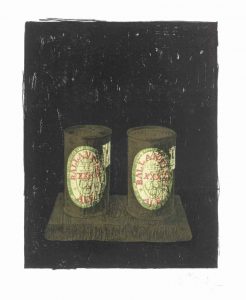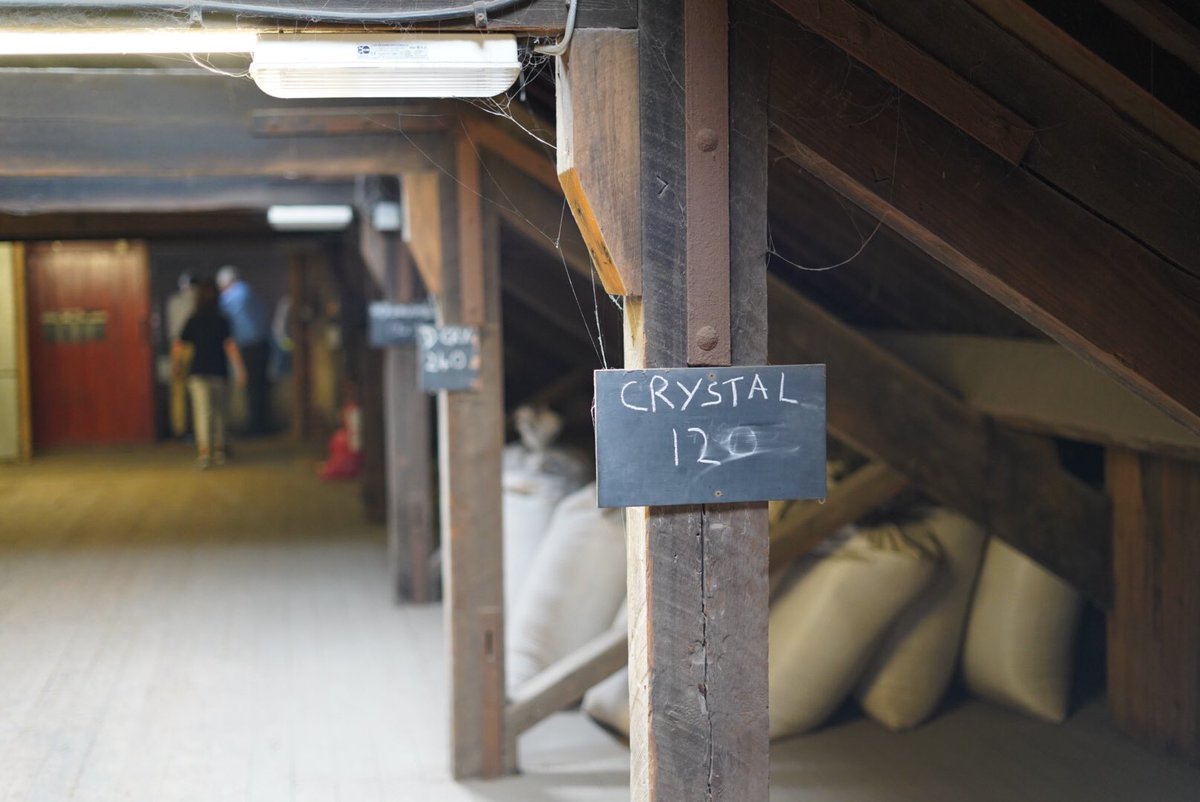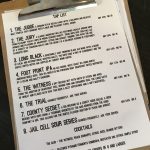 So how did your summer go? Mine was fine, thanks, even if I did have to work a lot. Finally got a real week off and I have been lazing about. Might go our to a favorite posted late last week on Twitter, Jasper Johns, “Ale Cans,” 1964. I like it. I have been just sitting here looking at things I like between stretches of doing things I like. Which is pretty good for a holiday.
So how did your summer go? Mine was fine, thanks, even if I did have to work a lot. Finally got a real week off and I have been lazing about. Might go our to a favorite posted late last week on Twitter, Jasper Johns, “Ale Cans,” 1964. I like it. I have been just sitting here looking at things I like between stretches of doing things I like. Which is pretty good for a holiday.
More beer health news. Nice to see that “minimal risk of harm” has replaced the silly J-Curve as a reasonably expression of the limited impact that moderate alcohol consumption has won out. Here is a good analysis of the study. The semi-paid semi-amateur trade spin doctors may still be out in force but the general rule is still minimal harm from minimal consumption… statistically. The always relevant question, as Jeff pointed out recently, is how minimal is your consumption… really.
I liked Andy’s tweet as it tied in with issues related to value and supply:
Going into a liquor store these days to buy beer is like stumbling into an episode of the Walking Dead. Zombie beer brands just sitting warm and dead on store shelves waiting to attack the unsuspecting consumer.
Layer on that the fun folk at The Sun had asking normal folk about some heavily priced UK craft brands: (i) “I work in a bar and have tried a lot of beers – and this one, from Evil Twin Brewing, is awful. I wouldn’t even pay a pound for it, let alone 12. On the tin it says it tastes of honey but I think it tastes more like sewage“; yet (ii) “I like a dark beer and this is pretty good from Evil Twin Brewing. We drink a lot of dark beer where I come from. In the background you can taste a burnt biscuity, caramel flavour which is nice.” The semi-paid semi-amateur trade spin doctors were again out in force defending… something… but I thought they were reasonable “person on the street” comments.
Then – get this – comes the news… nay, admission that the main brewery participating in the Back to the Future style buck-a-beer government program is losing money on the process. The biggest retailers has already backed out after mere days according to BlogTO (via Crystal.) What I think Andy, The Sun and this article are all noting is how little understood the value of beer is. I might suggest that it is because there is alcohol in beer and its price serves the intended of the consumer in given contexts but that would be opinionated of me.
Speaking of opinion, Josh Noel in the Chicago Tribute explored how US craft is expressing its opinion(s) of the current US Federal government:
In the Trump era, more than a few Chicago bar and brewery owners have worn their left-leaning politics on their sleeves. With an openness unseen in most corners of the hospitality industry, bars and breweries have openly worked on behalf of immigrant rights, gay and lesbian equality, transgender rights and even that third rail of politics, abortion.
Nice to learn from a link in that article, too, that Jim Koch‘s support of the President led to a boycott in his appropriated state of choice:
“Marketers really haven’t had to deal with something like this for 50 years — since the Vietnam War,” said Robert Passikoff, president of the New York consulting firm Brand Keys. “There is no win on this thing. There’s only dealing with it,” he added. “Now, everything is political.” Koch and Boston Beer have faced a backlash on social media driven by figures such as Somerville Mayor Joseph A. Curtatone , who pledged in a Twitter post to “never drink Sam Adam’s beer again!” In the physical world, a Jamaica Plain teenager and his father hung a spray-painted sign within sight of the company’s Boston brewery reading, “SHAME! SAM ADAMS [heart] TRUMP SHAME!”
Now, no need to just do a Koch pile-on when we have BrewDog. I don’t need to actually link to their latest failed marketing strategy (which I have a certain familiarity with being myself an early marketing strategy) but I would like to link to Carla Jean who unpacked their sexist and racist junk.
And Stan‘s last weekly update contains an excellent extended extract on the means by which Henry King (who served as president of the United States Brewers Association from 1961 to 1983) made sure the industry as a whole did not take a wrong step in marketing or brewing – he acted in the best interests of the trade and consumers:
“We beat the federal government by seven weeks. We reported the cobalt problem, we were out of it and no longer had production seven weeks before the Food and Drug Administration even got their act together on it.” He acted decisively not just because it was good for the beer industry, but because it was right. When the nitrosamine proved to be a carcinogen in the 1970s, King again moved swiftly.
Hero of beer!
There. Another week done, another month done and another summer almost done. Damn good thing I am immortal or I’d be getting all anxtity over this passing o’time stuff. B+B has more news on Saturday as always but I was going to also remind you that Stan will be back Monday… but he won’t! I was thinking of moving this summary of the news back a day or two. I will see how that goes…



























